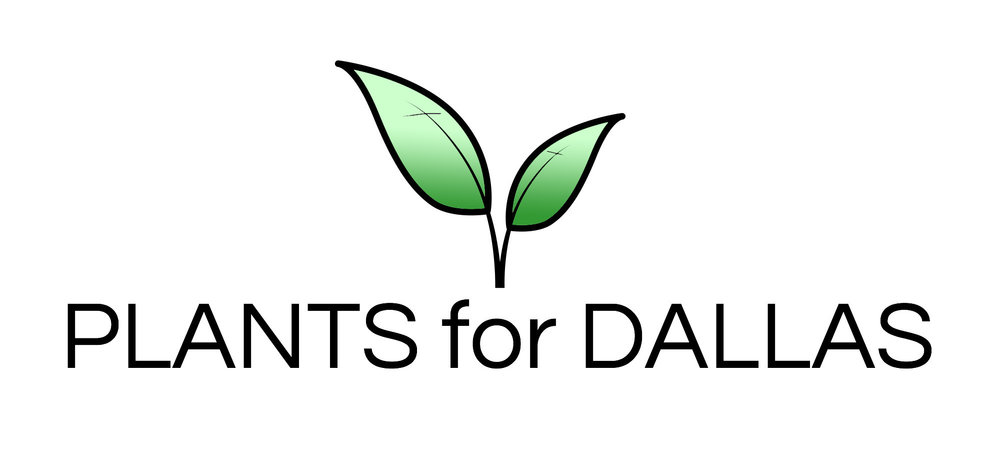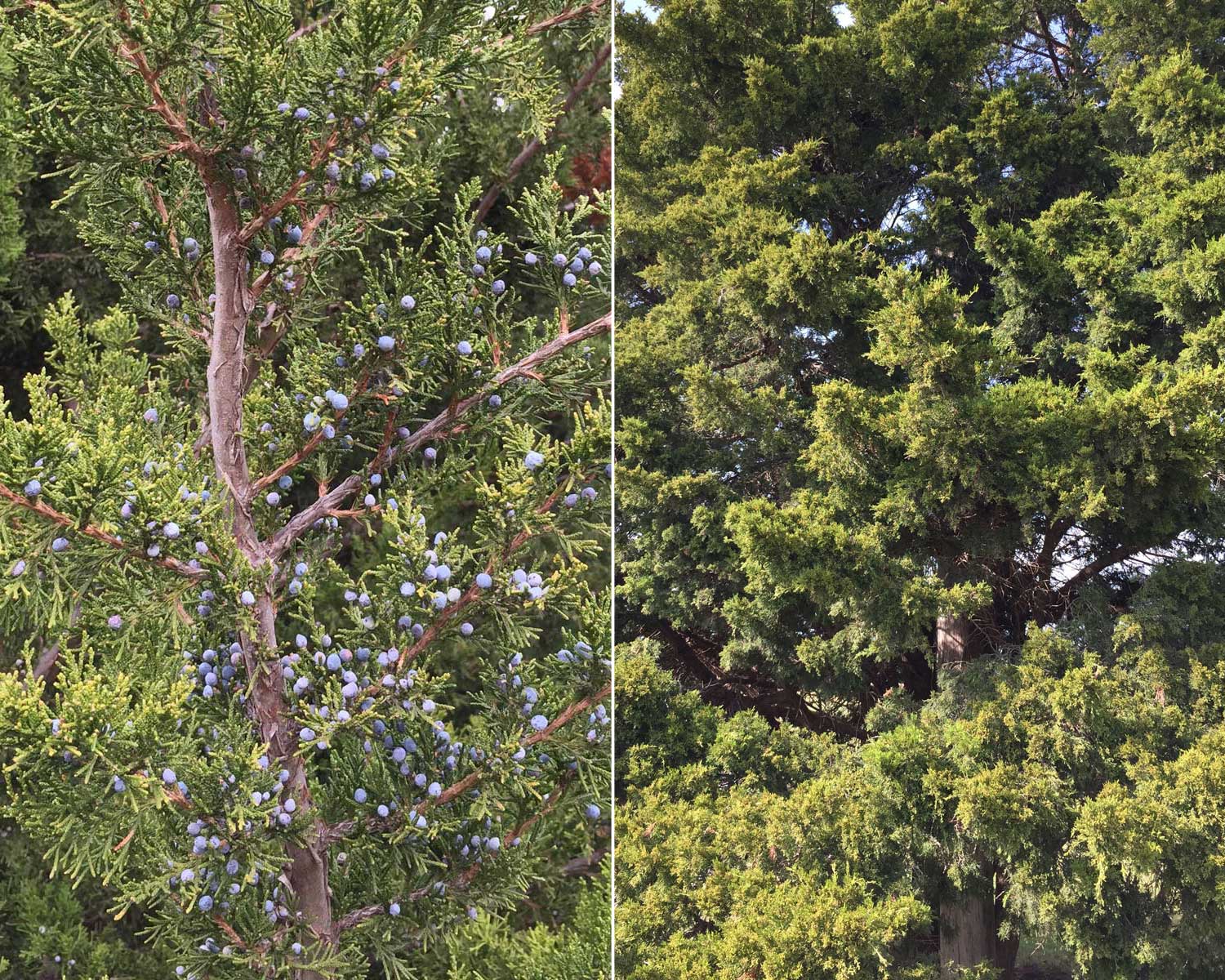
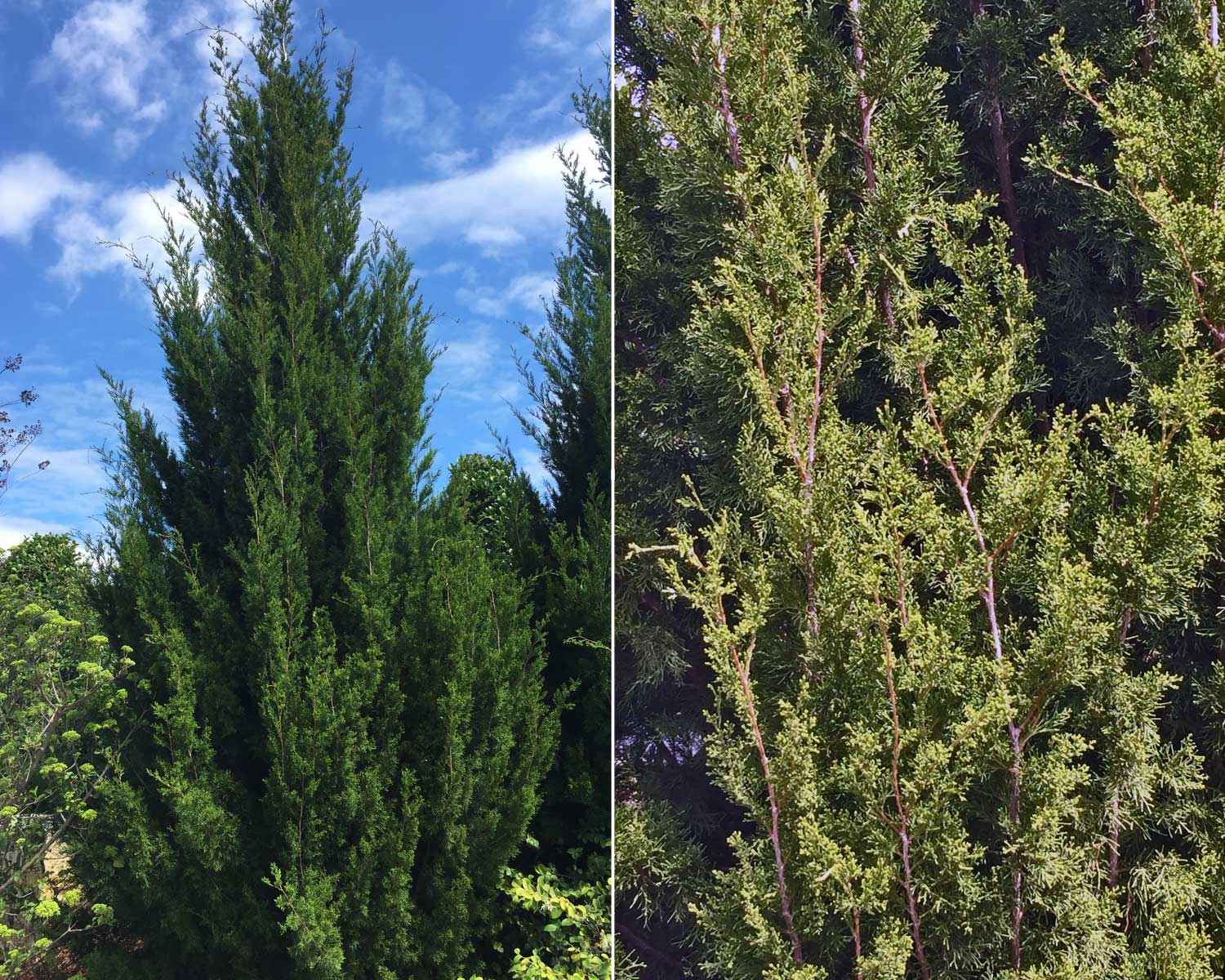
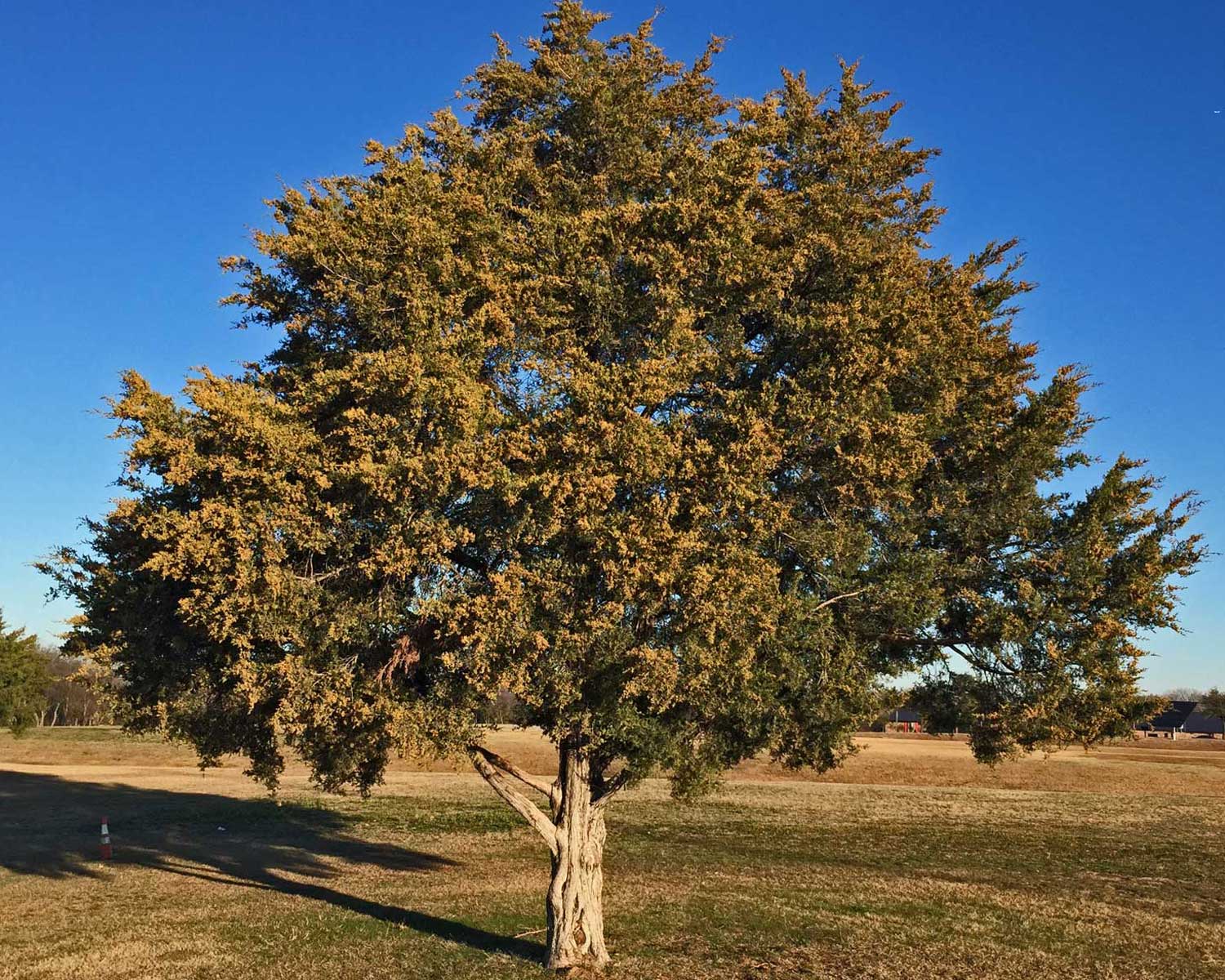
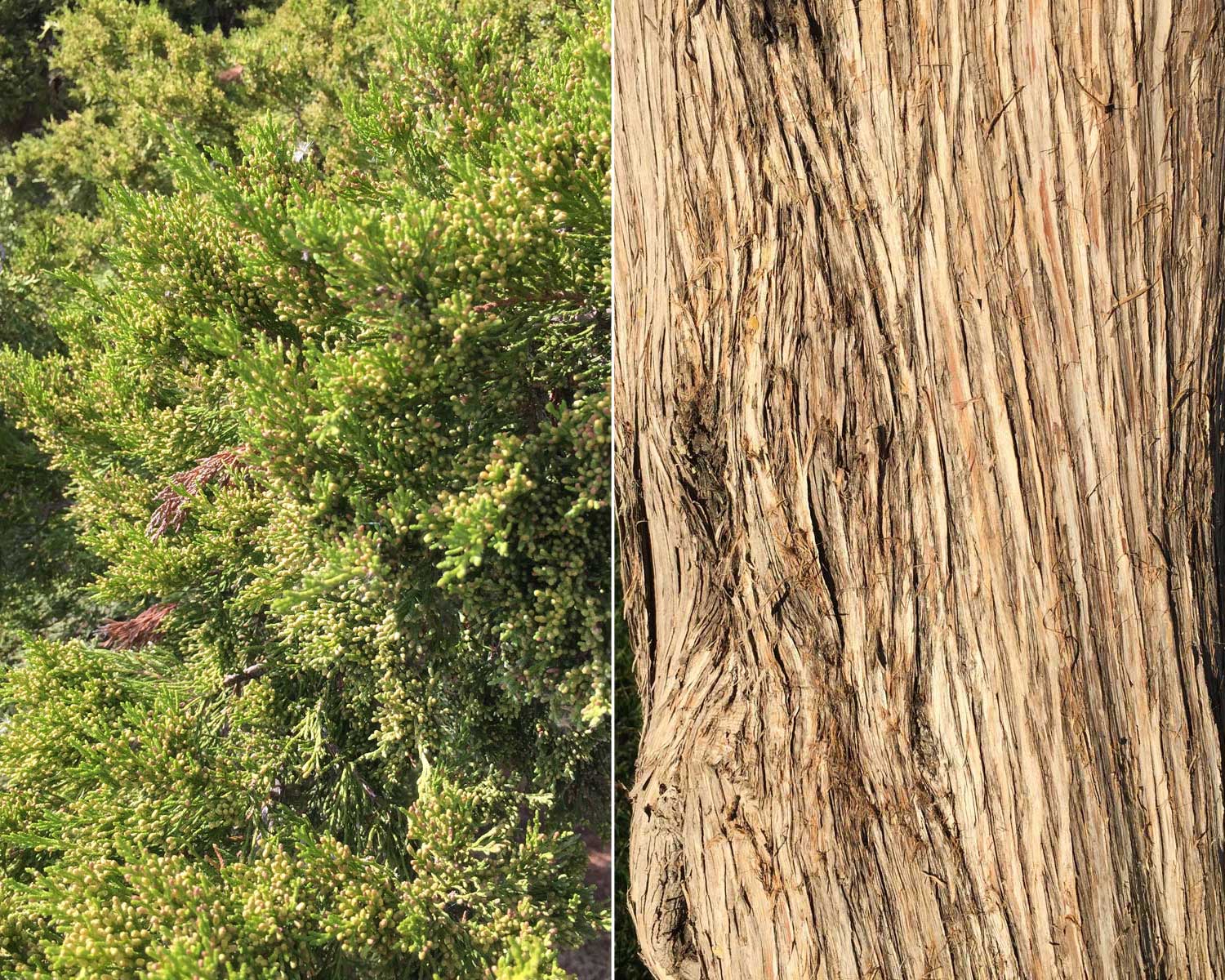
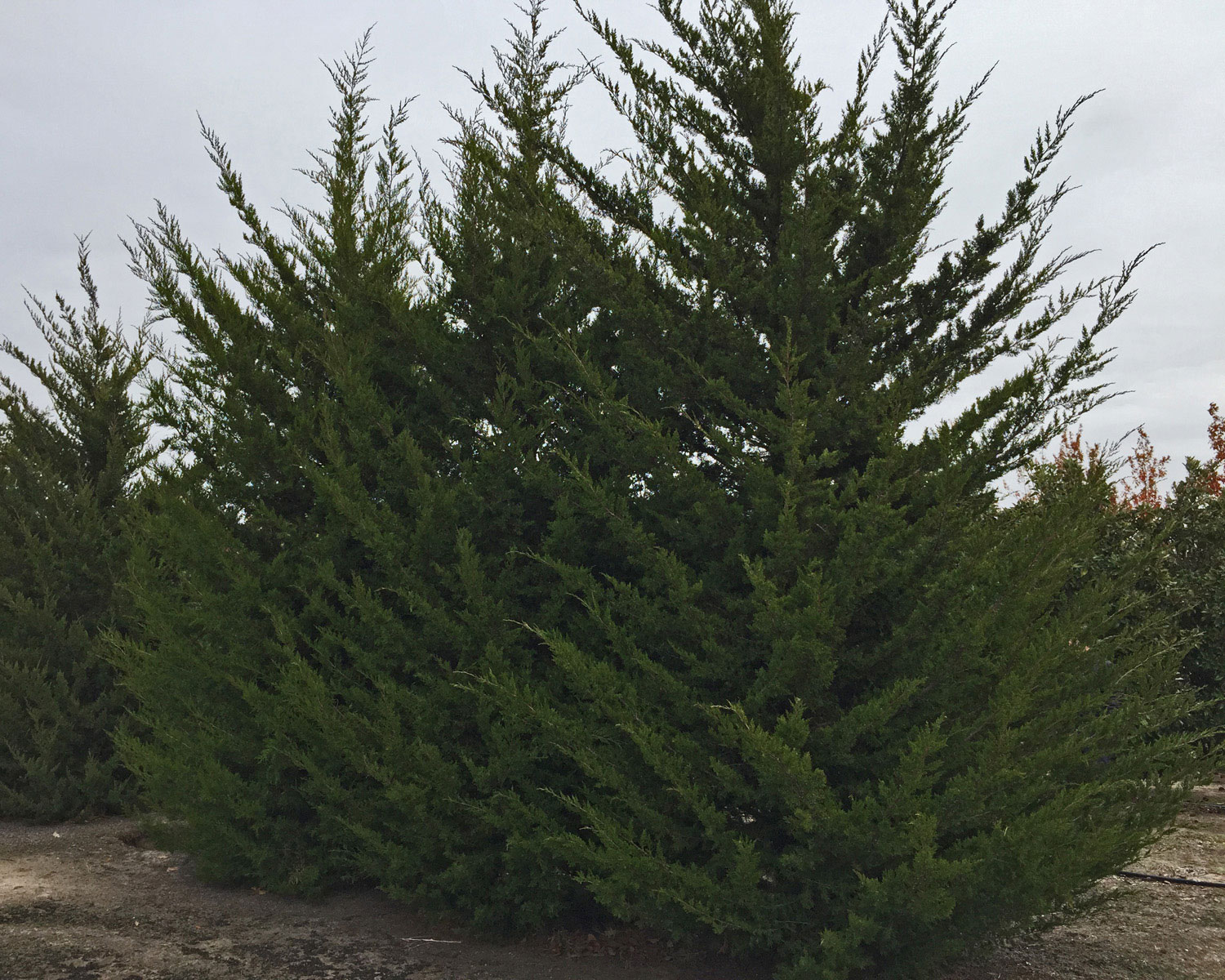
EASTERN RED CEDAR
Juniperus virginiana
Plant Description
A coniferous, evergreen tree with dense, green vegetation. Often planted as a large shrub in full to ground form, Eastern Red Cedar is best used for screening or in a grouping as a hedge or wind break. Has rather nondescript smaller blue berries but tolerates drought and dry, rocky soil.
Plant Details
- Pros: Screening, wind break, texture
- Cons: Nondescript berries
- Evergreen
- Size: 30-60' height, 10-25' spread
- Light: Sun
- Bloom Color: None
- Fall Color: None
- Water Needs: Low-Normal
- Similar Plants: Brodie Juniper, Leyland Cypress
